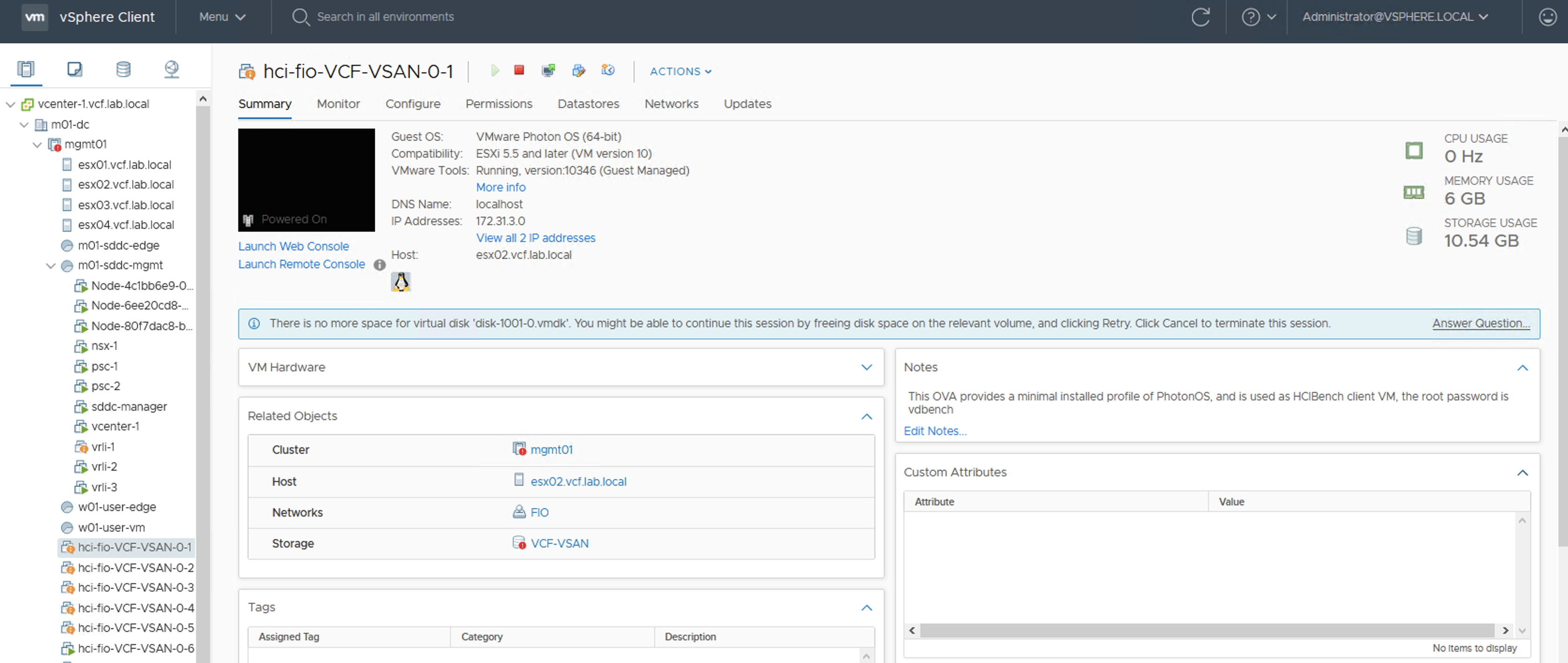
To change the default swapfile location for the host select the host, click the Configuration tab and Virtual Machine Swapfile Location. Datastore cluster is out of space Datastore in a datastore cluster is visible in more than one datacenter Datastore is in multiple datacenters Datastore usage on disk Default alarm for incorrectly configured VMKernel NIC Default alarm that is triggered when virtual machine Consolidation Needed status is set Default alarm that triggers if a pre-4. It may be likely that your host is configured to use a different datastore for all VMs by default and it is just taken up by swap files at this point. As far as cleaning up that datastore, you can right-click it and Browse and poke around to see what kind of files are taking up the space.
Datastore usage on disk alarm free#
Select one of the other options ("Always store with the virtual machine" is recommended and will probably work for you since that datastore has a lot of free space). Right-click the VM and go to Edit Settings > Options tab > Swapfile location.
Datastore usage on disk alarm full#
Are any of the datastores full or very close to it? The swap file may be located on a full datastore even if the VM is on another datastore and if the host cannot create the swap file, the VM will not boot. Some of the attributes can be configured with global settings, and others can only be configured with settings for individual servers. The output of the preceding command is as follows:īody : Datastore Uid : /VIServer=vsphere.Take a look at all of the datastores visible to the host (in vSphere, select the host > Configuration tab > Storage). checkvmwaredisk version 1.0 checkvmwaredisk Jose Manuel Gonzalez - ENGLISH: I made a plugin for nagios to remotely check the status of the hard drives of a server with ESXi 5.1. The following table contains a list of the monitor types available in BMC ProactiveNet VMware vSphere Monitoring. Totol size of /opt partition is 8.7 G Totol size of /opt partition is 8. Re-enabling the alarm resolves the issue. but /opt/ shows high disk usage and may trigger alarm. Restarting the VMware VirtualCenter Server service does not resolve this issue. This appears with the default datastore usage on disk alarm. If a specific partition is full, the System Disk Full alarm triggers and. If you want to put the rule in action for the alarm, make sure that the Enable this rule. For example, the System Disk Full top-level alarm aggregates over multiple partitions. At the Define Rule step of the wizard, specify conditions (or other settings, as applicable) for the alarm rule. At the Choose Rule Type step of the wizard, select Resource usage. PowerCLI C:\> Get-AlarmDefinition -Name 'Datastore usage on disk' | > Get-AlarmAction | Format-List -Property * The datastore usage on disk alarm fails to trigger even when the trigger condition is satisfied. To add a rule based on resource usage counters: On the Rules tab, click Add. Because the default output shows only the ActionType and Trigger properties, the output is piped to the Format-List -property * command to show all of the properties: When disabling this alarm, I would strongly recommend to set percentage of Datastore Disk Usage in alarm Datastore usage on disk like Space threshold in storage cluster configuration. In the following example, we will retrieve the alarm actions of the Datastore usage on disk alarm definition. But when enabled alarm Storage DRS recommendation would stay on warning-level, because recommendation couldn’t be applied.

The Get-AlarmAction cmdlet has no required parameters. To prevent this, you can set up an alert when VM usage of your datastore’s provisioned storage capacity becomes excessive (e.g., over 85 percent). The syntax of the Get-AlarmAction cmdlet is as follows: Using close to all of a datastore’s disk capacity can cause out of space errors and degrade VM performance. The Get-AlarmAction cmdlet will retrieve the alarm actions of the specified alarm definitions.


 0 kommentar(er)
0 kommentar(er)
